Writer, chef, and Filipino expat Louise Baterna discovers the pleasure of gardening, and created a green paradise tucked in her backyard, in the bustling city of Brussels.
It began during my autumn years, when the first signs of arthritis appeared on my fingers, when kneeling for long periods of time felt like a real sacrifice. It did not stop me though, to venture out in the open, in the garden that I have ignored and let nature take its course for many years.
More than twenty years ago, not knowing what we could be getting, we went to a public sale of several properties. With a limited budget, we chose the smallest house with a four-meter-wide garden, extending up to eight meters to a back wall. Beyond that, stretching the entire length of a row of houses was a huge plot of land that nobody wanted, despite its giveaway bidding price. It was like a neighbourhood dump and no one saw its potential…except us.
My husband dreamt of having a dog and he wanted a huge space for it to run and play. I thought then, that when the dog was too old to run, it would be nice to have some extra square meters of real estate to build on. In the meantime, we built a garden, or rather, the landscape architect, who brought a mini bulldozer, transformed the dump into a two-level lawn. He tore down the back wall and it opened to this bigger garden, slightly hidden from many viewpoints. He saved some trees, cut others, planted new ones and closed off a section for parking rentals. To complement the evergreens, we added a few fruit trees, created a line of berry bushes, and when our daughter was born a year later, we planted a walnut tree.
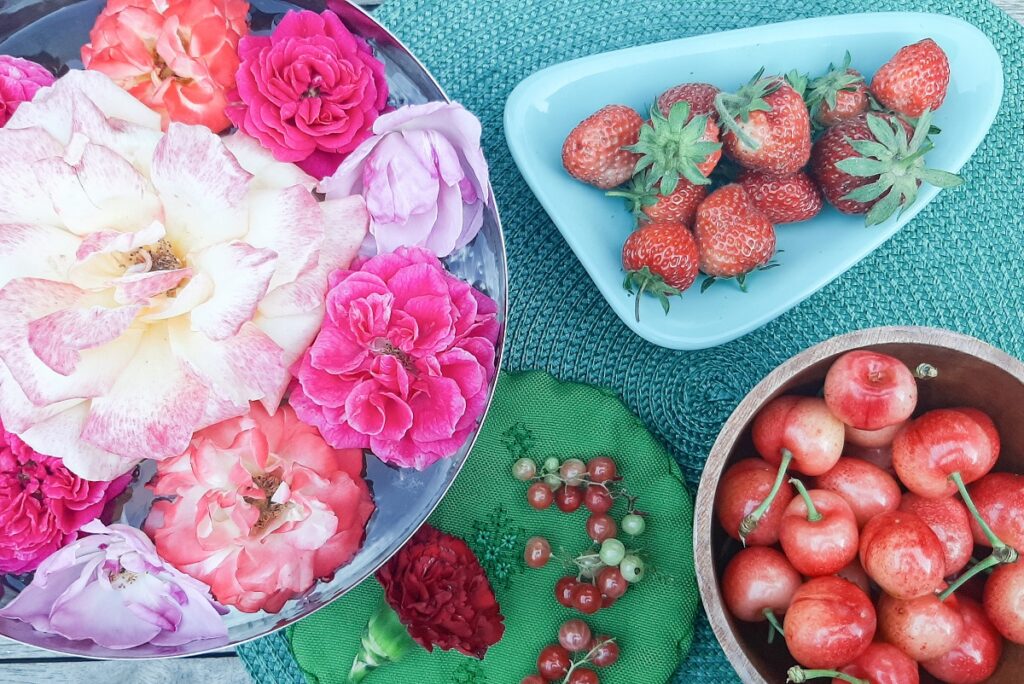
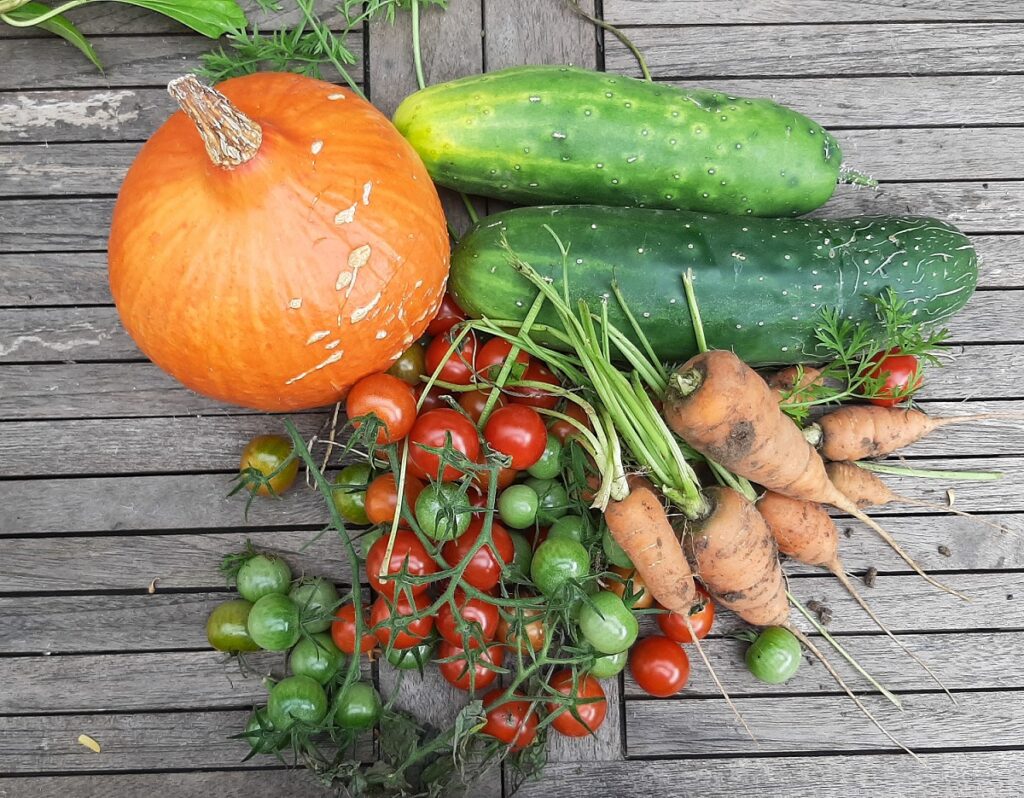
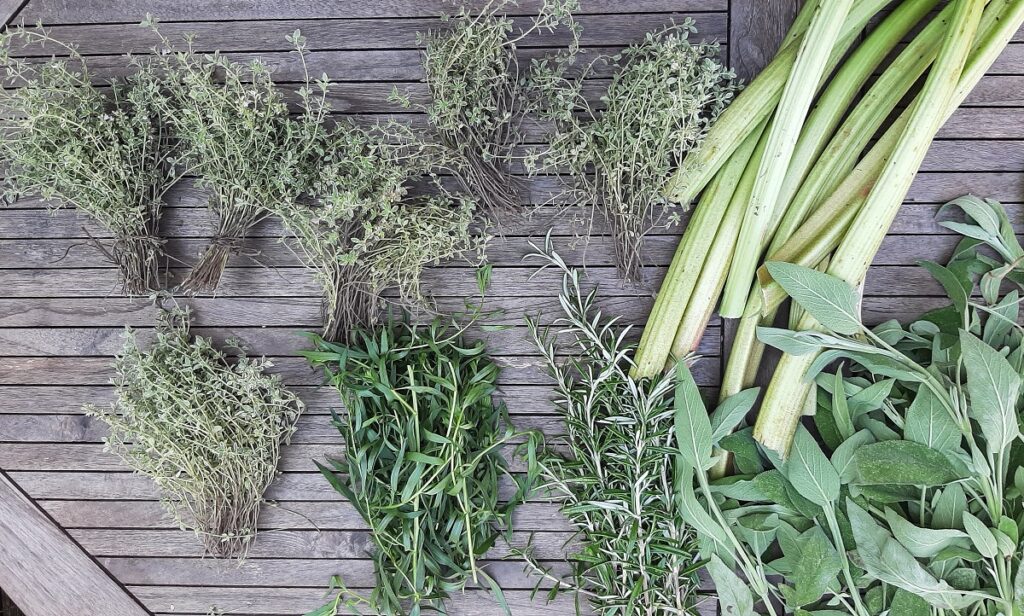
This little paradise in the city
My real interest in gardening grew when I realised I could grow my own food, at a time when the green movement became fashionable. Go organic, go local, grow your own. Working in the kitchen of a European diplomatic mission, I was also immensely inspired by chefs who tended their own vegetable gardens, creating plant-based menus from their own produce, from farm to table, from herb parterres to mortar and pestle, ground into concoctions that create magical flavours. Growing vegetables became the new source of culinary creativity, as if it was something new, when in fact, vegetable gardens had always been the source of what we eat except that over time, men and women had become too busy, too lazy, too spoiled, demanding variety and choice from supermarkets resulting in monocultures and intensive farming.
It took almost 20 years for the garden to “settle.” It took me longer to call it mine. It was there, enclaved among walls of neighbours, this little paradise in the city. Season after season, bushes and trees found their places, like hosts of a big party holding their breath, waiting for the day I would eventually come and embrace them.
Louise B.
It was during the spring of the year I turned fifty when I joined the ranks of plant enthusiasts. I felt like a warrior and the garden became my new territory. I attacked my new hobby with frenzy. I rushed to the nurseries, hoarded seeds, bought fancy tools. Shovels and pitchforks became weapons. I allied with worms and built barricades for slugs. I waved my dirty and broken fingernails like war medals. Every day, I visited my two raised vegetable patches, waiting for tiny signs of life.
I was impatient. I wanted quick results, bringing out seedlings too early in the season or showering too much fertilizers. I was awkward, ignorant and didn’t take the time to get myself acquainted with my garden. Instead, I was like an obsessed lover who zealously smothered his object of desire without the prelude of a courtship.
My first trials failed
Ignoring the first rule was the root of the problem. Know your soil. Ours was sandy, which made it difficult to grow any kind of vegetable but turned out to be best for carrots, tomatoes and strawberries. Feed it with nutrients. Fortunately, we were already composting and the “ripe” bulks were added to the soil. Water regularly. This was a problem as we didn’t have any water source in the former dump but eventually found a system to collect rainwater in big barrels from a neighbouring building’s downspout, beside the mini green house where I potter and prepare seedlings or re-pot young plants to bigger containers.
With some technical improvements and a bit more knowledge, I tried again the year after. My vegetable patch was yet far from robust. The salads remained shy, the beets tasted bitter. I also wanted to experiment with tropical vegetables like okra and pigeon peas. But apart from the zucchini, which seemed happy where it was and like a diva, claimed much of the territory with its leaves and vines, other vegetables remained stunted.
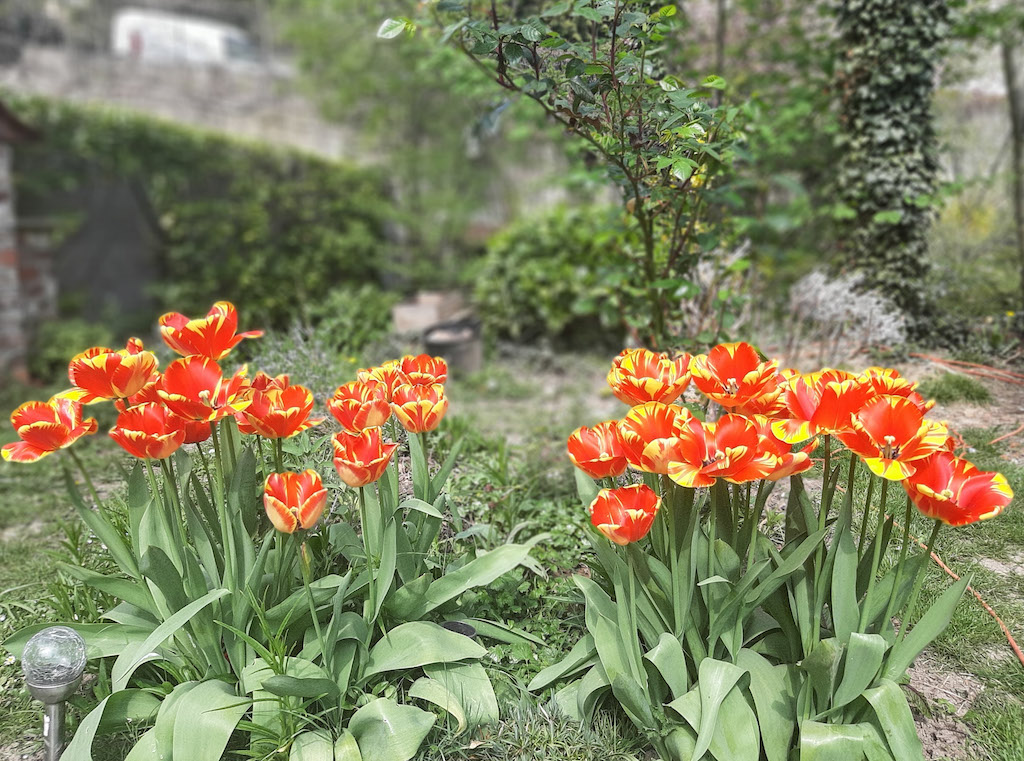
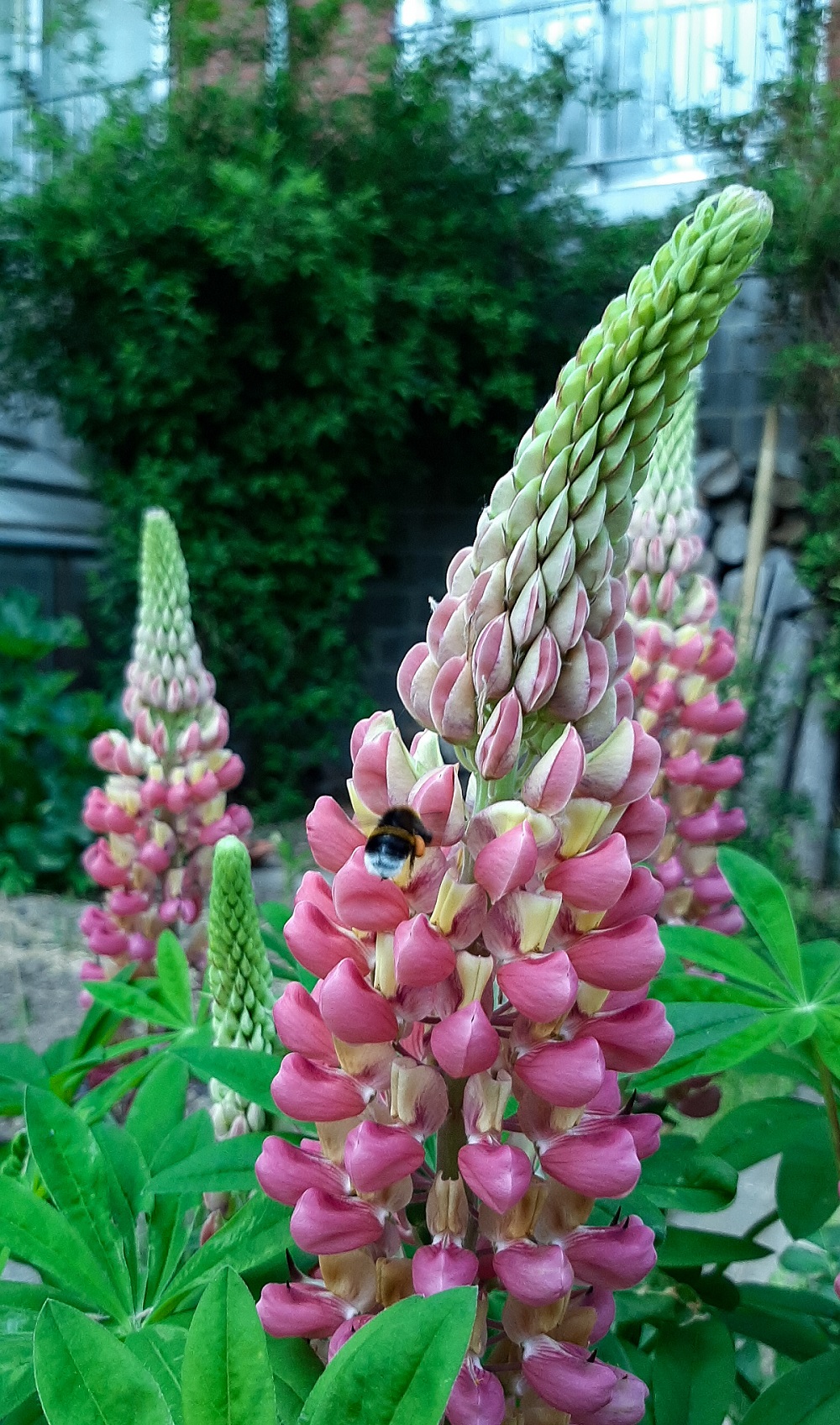
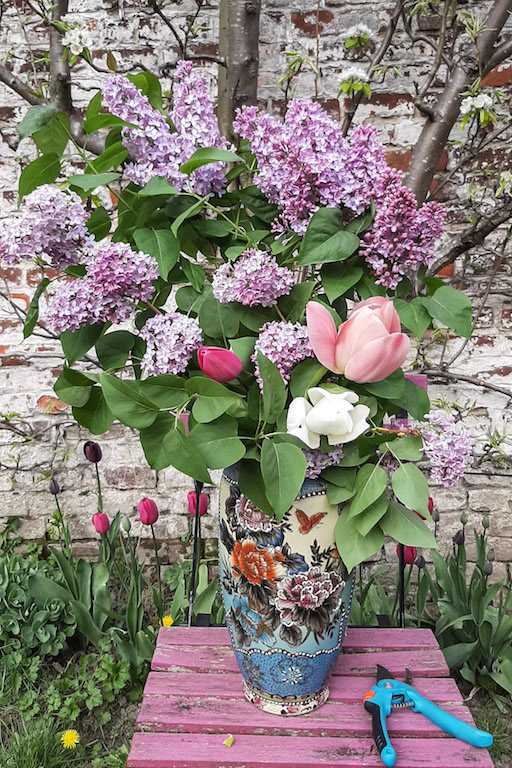
Meanwhile, the fruit trees, which were planted many years ago, started bearing fruits. The walnuts and plums were a bit bigger. The weight of Conference pears and Golden apples bent their branches. And, as if it was announcing the onset of a sunny summer, the cherry tree turned bright red with its bounty. Under its lush foliage, I made what I call my Cherry Tree Corner. It’s red brick and pave flooring, each of it I hauled and installed; and a flea market find-wrought iron table and chairs made it a perfect place for reading and meditation. This was also the time I learned how to make jams.
Since then, every summer, the abundance of sweet things would line our basement pantry: jars of plum, rhubarb and fig jams and apple compote. Tarts and crumbles also graced our picnic tables.
Louise B.
Of roots, leaves and buds
The vegetable patch, however, continued to defy me. Year two after I started digging my fingers in soil, the harvest remained lean. I turned to flowers, thinking that would be easier. But that was a completely different universe: insects, mildew, differences between annuals and perrenials. How little did I know. Again! Somehow, with very little intervention, many of them bloomed.
Lilacs, forsythias and camelias brightened shady corners. Tulips, hyacinths and daffodils thrived under the trees. Climbers, like the clematis, adorned walls while the wisteria, with a bit of guidance, formed a canopy where the backwall used to be. Peonies became my favourite. Short flowering period but endowed with generous, plump petals that looked like a hundred pages of a book.
I became interested with fragrant rose varieties, dedicated the sunniest portion of the garden to my amateur cultivation, and finally, the lupins naturally found their homes in spots I thought impossible: in the vegetable patch. The flowers filled vases, bowls, even teapots, arranged with intuition and techniques I followed on an online floral arrangement course. Unknowingly, I was diversifying and was getting more addicted to anything that had roots or leaves or buds.
A haven during the lockdowns
One late summer, after several weeks of ignoring the raised beds, I finally returned to them. I don’t know what kept me away. I blamed it on Belgium’s relentless rain that year, the stubborn slugs, a sort of burn-out from saying yes to many things. I was also thinking that maybe, I didn’t have a green thumb after all.
But when I reached the vegetable patch, I was so humbled to discover that “they” gave…. what I planted months ago – without receiving attention. True, the corn and potatoes died, the chili peppers shrivelled, the salad grew like a tower but the carrots, cucumbers, tomatoes and pumpkins survived. Not a huge harvest but enough to make a decent vegetarian meal and to remind me this is why I garden in the first place. I finally succeeded to grow my own.
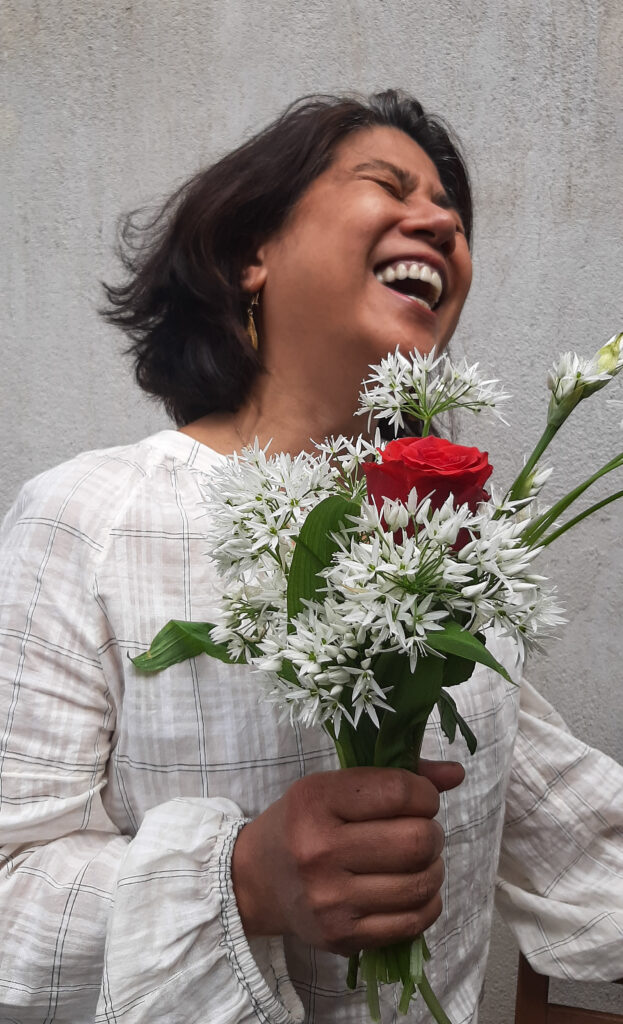
The garden had become our haven. During the lockdowns, we felt so privileged to have this space outside, envied by others who didn’t realise that such a luxury demanded dedication and hard work.
Louise B.
Over the years, I have learned from my gardening mistakes and from the pitfalls of my impatience. I now have a pile of practical books but the most difficult task was accepting that gardening is a long journey. When I look around in my garden, seeing how young my fruit trees are, I regret to have taken an interest late in life. I will probably never sit under the shade of the trees that I have planted. Trees grow old with us, grow older than us.
Sometimes, when I need to think or feeling the blues, I would sit on a bench, gazing at nothing and everything. Taco, our third adopted dog who runs in this playground of his predecessors, jumps beside me and puts his head on my lap. And time stands still until he decides to run after the fox or squirrel that he doesn’t really want to catch in the first place. This is our pastime until the days become shorter as autumn officially sets in.
Slowly, the garden metamorphoses, from a green palette to a golden and deep red hue. The low temperatures will make it less bearable to sit on the bench for a long time. Leaves will start to fall, leaving branches naked. The last rose petals will brave the cold but bulbs will hide deep in the earth to go to sleep in winter. I will still potter where I can, lingering on places that need work next spring, until darkness will remind me to leave the garden in peace, that me too… I will need rest until the next awakening.
What's Your Reaction?
Louise Baterna is a writer and former lifestyle journalist in Manila. She lives in Brussels and works as Chef Du Cuisine at the Residence of the German Delegation to the NATO.




